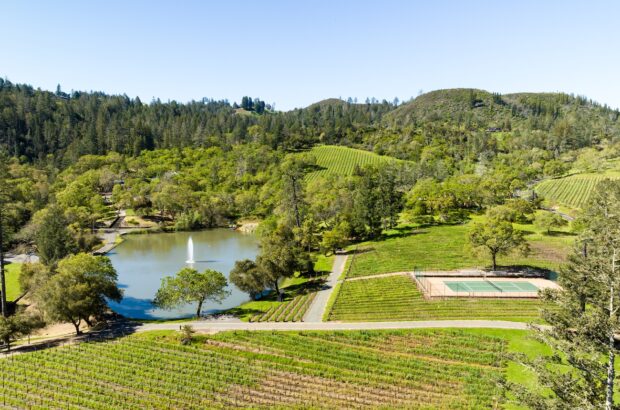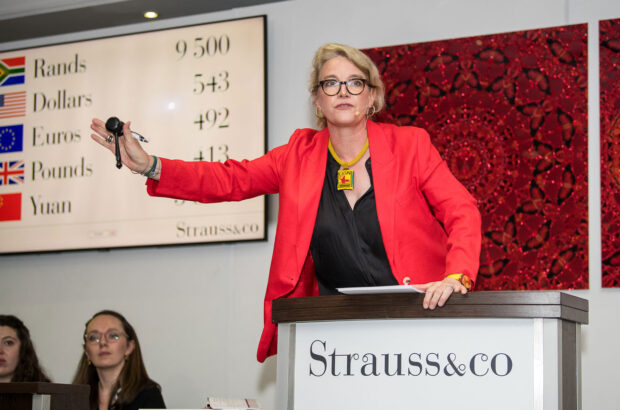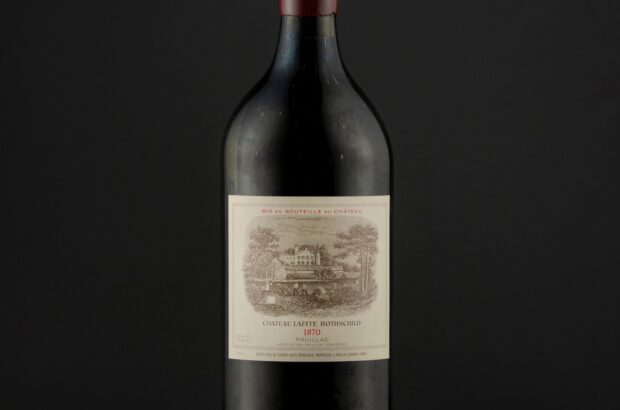One of the world’s most popular holiday spots, this Italian island is a haven for those wanting an authentic food and wine experience, finds Carla Capalbo.
Fact File
Planted area 7,000ha, of which 66% is DOC and/or DOCG
Production (2014) 502,000hl
Total Vermentino 4,194ha (of which 70% is in northern Sardinia) Vermentino di Gallura DOCG 1,320ha
Main grape varieties Red Bovale (Bobal), Cannonau (Grenache), Carignano, Monica,
White Malvasia, Muscadellu, Nasco, Nuragus, Vermentino
Sardinia, Italy’s second largest island, has striking landscapes with unspoiled, rocky coastlines giving way to rugged mountains still sparsely populated by shepherds and their sheep. Almost despite its coastal accessibility, the island remains closed and introspective at its heart; many islanders prefer lamb and goat to fish. Yet in recent years Sardinia’s better wines have progressed from stubborn rusticity to a more open, modern approach.

While the big reds of the south, such as Cannonau and Carignano, reflect the Spanish influence of the island’s past, the light-skinned white Vermentino has links to Liguria – where it is known as Pigato – and to the Tuscan coast. It’s also found in Provence and Languedoc-Roussillon: indeed Sardinia’s geology has more in common with southern France than with its political motherland.
Nowhere does Vermentino express itself better than in the province of Olbia-Tempio, at the northeastern corner of Sardinia, where it’s made into Vermentino di Gallura DOCG (with the Superiore category also available for wines with slightly higher alcohol levels).
Vermentino is most often vinified in stainless steel vats to maintain crispness, though some barrel ageing is also found. Its lively character and attractive citrus and floral notes – often with hints of ginestra, the local yellow broom flowers – keep it refreshing and dry.
‘The region of Gallura is Vermentino’s natural home, where the salty winds and very poor, stony soils of granite and sand give it an intense mineral character,’ says Giampaolo Gravina, one of Italy’s senior wine critics.
As so often with native varieties, Vermentino has found its ideal habitat through time: it has been cultivated in Gallura since the 14th century. The vines have adapted well to the extreme growing conditions: cool, dry Maestrale (Mistral) winds coming down from the northwest, and 300 days of forceful sun a year.
Into the wilds
Still, Gallura is not an easy place for vines to grow. The rocky terrain is very uneven, and the hillsides are covered thickly by macchia mediterranea. Similar to English heath, the mix of indigenous plants here – including broom, euphorbia, holm-oak, buckthorn and myrtle
– are able to survive Sardinia’s parched summers. It results in a fragrant, evergreen and impenetrable scrub. Many trees are also farmed for their cork (used in wine bottles). Wineries here range from small family affairs to large, successful cooperatives such as Cantina Giogantinu and Cantina Gallura that specialise in affordable and drinkable wines from the local area. All are open to visitors but appointments are necessary.
‘Vermentino is the quintessential Mediterranean grape: it loves the sun, the sea and the wind, and it marries perfectly with fish, shellfish and seafood pastas,’ says Gravina. ‘Despite the region’s climatic extremes, well-made Vermentino di Gallura maintains freshness and acidity and often shows an attractive saline quality.’
 Gallura’s stunning coastline, with its pristine, fjord-like bays and sandy beaches, is never far away from the vine-growing slopes. In 1961, the Aga Khan – one of the world’s richest men – created a luxury tourist complex here along 20km of coastline that allowed for some development while successfully preserving its natural beauty. He named it La Costa Smeralda (the Emerald Coast) and built some of the world’s most exclusive hotels and villas around Porto Cervo.
Gallura’s stunning coastline, with its pristine, fjord-like bays and sandy beaches, is never far away from the vine-growing slopes. In 1961, the Aga Khan – one of the world’s richest men – created a luxury tourist complex here along 20km of coastline that allowed for some development while successfully preserving its natural beauty. He named it La Costa Smeralda (the Emerald Coast) and built some of the world’s most exclusive hotels and villas around Porto Cervo.
In midsummer, hotels such as the luxurious Cala di Volpe charge prices only moguls can afford, with multi- tiered yachts anchored at its secluded marina. But either side of high season both tourism and hotel prices drop far enough to make its splendid seaside accessible in affordable country agriturismi and smaller hotels.
The food is delicious, with fresh fish and local pastas such as fregola served with intensely flavoured local tomatoes, followed by roast suckling pig – or porceddu – another of the island’s favourites. And save room for dessert: Sardinian pastries are legendary. Look for the fabulous seadas, a fried pasty filled with fresh sheep’s cheese that’s served warm with the bitter honey made from native corbezzolo (the strawberry tree).
It’s worth spending at least one night in Olbia to check out the town before heading to the wine country and beaches. There’s a Roman aqueduct and port, while the Museo Archeologico helps set the scene of Sardinia’s ancient past. Olbia’s historic centre offers shops, cafés and some good food.
Visiting the vineyards of Sardinia
Wine tourism is increasing in Sardinia and well-appointed cellars make perfect destinations for day trips. If you’re intrepid and enjoy spectacularly situated vineyards, Siddùra is a short drive under the mountains towards Luogosanto. Here 19 hectares of macchia have been transformed into thriving young vineyards, mostly planted to Vermentino.
Sardinia’s interior is dotted with small stone villages in which time seems to have stood still, yet in which Sardinia’s gastronomic and cultural heritage is still very much alive. Pane carasau is a uniquely thin crispbread favoured by the local fishermen; often enjoyed with Fiore Sardo DOP cheese. When it is made with the raw milk of the native breed of sheep that is descended from the Nuragic age, it has a slightly smoky character from the wood-burning fire over which the milk is cooked. It’s even listed in Slow Food’s Ark of Taste.
Wine is another great way to access that culture. The annual Porto Cervo Wine Festival, held in mid-May each year, is open to the public and offers a perfect introduction to Sardinia’s exciting world of wine and food.
If you’re based in Olbia, drive 30 minutes’ southwest one day to visit two other fine Vermentino producers. Mura is a family run estate with 20ha and high- quality wines, including the award-winning Sienda. Nearby, Masone Mannu is a larger winery with 60ha and a good range of both whites and reds.

My perfect day in Gallura, Sardinia

Sardinia: where to stay, eat and shop







